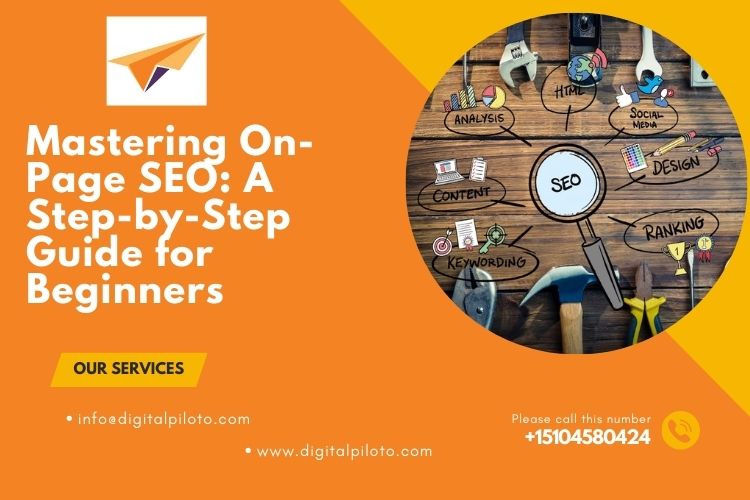Introduction:
Search engine optimization (SEO) is the backbone of digital marketing. Websites exist to be found by users, and SEO is the tool that makes that possible. However, SEO is not a straightforward process, it’s complex and ever-changing. One of the core components of SEO is on-page optimization. This has to do with all the elements you can control on your page to make it more user-friendly and easier for search engines to crawl.
On-page SEO is a complex beast— it involves keyword research, content optimization, technical SEO, and even user experience. With so many factors to keep in mind, it’s no wonder that many beginners feel overwhelmed by the concept. But fear not, in this article, I’ll be breaking down the process for on-page optimization, step-by-step, so you can start mastering it and boost your online presence.
Step 1: Do Keyword Research
The first step in on-page SEO is always to do thorough keyword research. Keyword research involves finding the phrases and words your target audience is searching for. Understanding your audience’s search queries will help you use your resources more efficiently in optimizing your content. There are many tools available for conducting keyword research, including SEMrush, Moz, and Google Keyword Planner.
Step 2: Optimize Your Title Tags
Title tags are the HTML elements that tell search engines what your page is all about. They are displayed as clickable headlines in search results and in the browser tab. Optimizing your title tags with relevant keywords and a compelling message will significantly improve your click-through rates. The ideal length for title tags is between 50-60 characters.
Step 3: Create Compelling Meta Descriptions
Meta descriptions are the snippets of information displayed below the title tag in search engines. While meta descriptions are not a direct ranking factor, they are essential to optimizing your click-through rates. A good meta description should be around 155 characters and should be optimized with the primary keyword and a compelling message.
Step 4: Optimize Your Content
Content optimization is all about crafting high-quality, engaging content that satisfies searcher intent. Search engines are more likely to display quality content that answers user queries. Make sure your content is well-organized, well-written, contains relevant keywords, and is formatted correctly using headings, sub-headings, and proper bullet points.
Step 5: Technical SEO
Technical SEO is the process of optimizing your website for search engines and users. Technical SEO includes optimizing page loading speed, crew ability, schema markup, and ensuring your website is mobile-friendly. Technical SEO is critical to your website’s performance; if search engines find it challenging to crawl your site, your rankings will suffer.
Conclusion:
On-page SEO is a critical component of a well-rounded SEO strategy. By following these steps, you’ll be able to use on-page optimization to your advantage and start getting your website found by your target audience. Remember that SEO is a never-ending process and requires continuous optimization and refinement. If you need professional assistance, consider working with an experienced SEO agency in California, or an SEO agency in the USA such as a Digital Marketing Company in the USA to help you get the best results for your business.
Full Audio: Click Here
Direction: https://g.page/r/CWg5kpBgE_zHEAE





0 Comments